04-25-2017, 08:16 AM
I got involved in a great discussion with MikesQuest on Discord the other day about rotating a rectangle in perspective and promised I would have a go at solving the following problem:
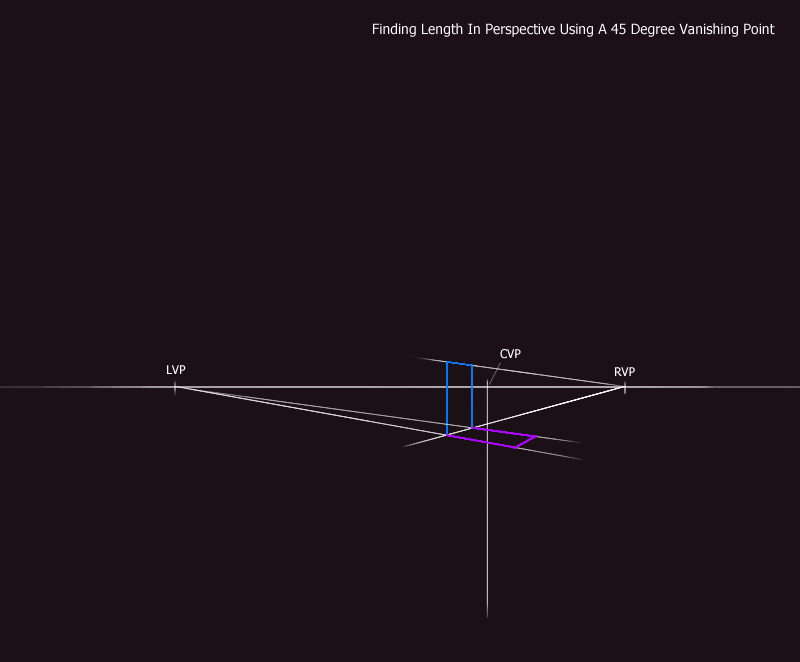
There are 2 methods that I am aware of for doing this, the "Measuring Point" method and (for want of a better name) the "45 Degree Vanishing Point" method.
I promised to investigate the 45 degree vanishing point method as described on p48 of How To Draw by Scott Robertson and Thomas Bertling where a 45 degree vanishing point is used to find a length in perspective.
Please note that I am still a learner myself so if you see any flaws in my logic, I would appreciate you pointing it out to me :).
Step 1: Go into top view and establish the Station Point using the Left Vanishing Point (LVP) and Right Vanishing Point (RVP). See p24 of How To Draw.
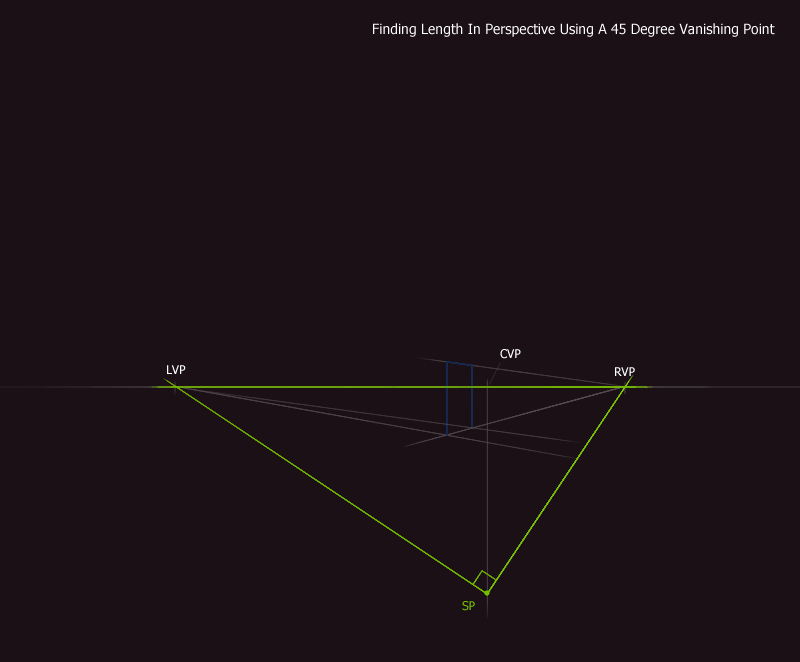
Step 2: Consider the side view that is perpendicular to the side of the rectangle.
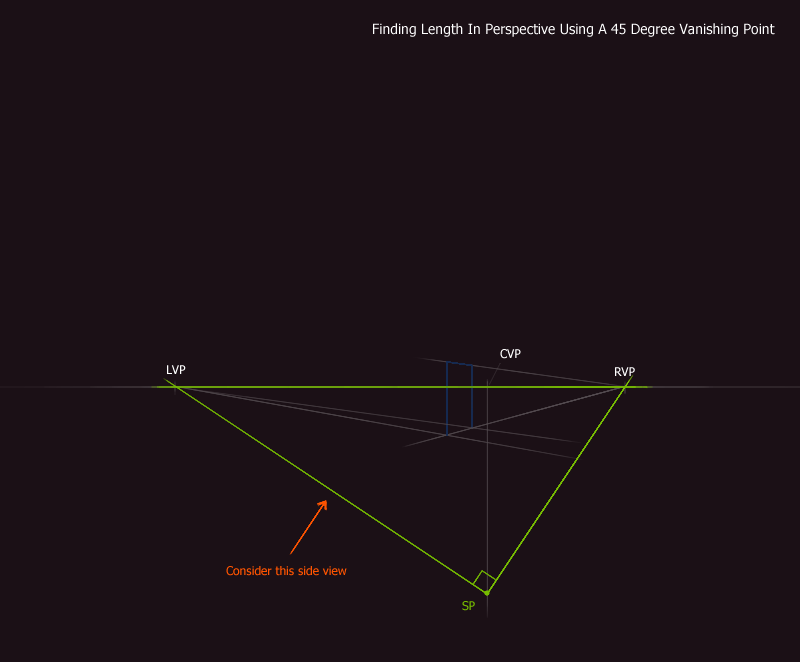
Step 3: Project this side view over the top of the perspective view so that the Side View Picture Plane runs vertically through the LVP. Then find the 45 degree Vanishing point by arcing the Station Point through 90 degrees about the LVP.
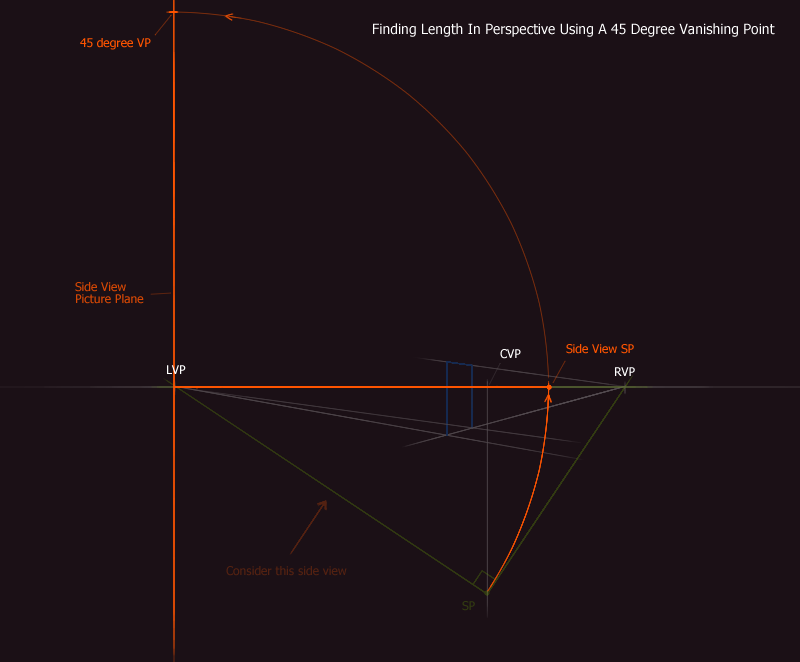
Step 4: Go back into the perspective view. The 45 degree vanishing point we found in the side view will also work in perspective view since we kept the distance from the station points to the picture planes the same. In perspective view, use the 45 degree vanishing point to find the length of the rectangle when it is laid down horizontally.
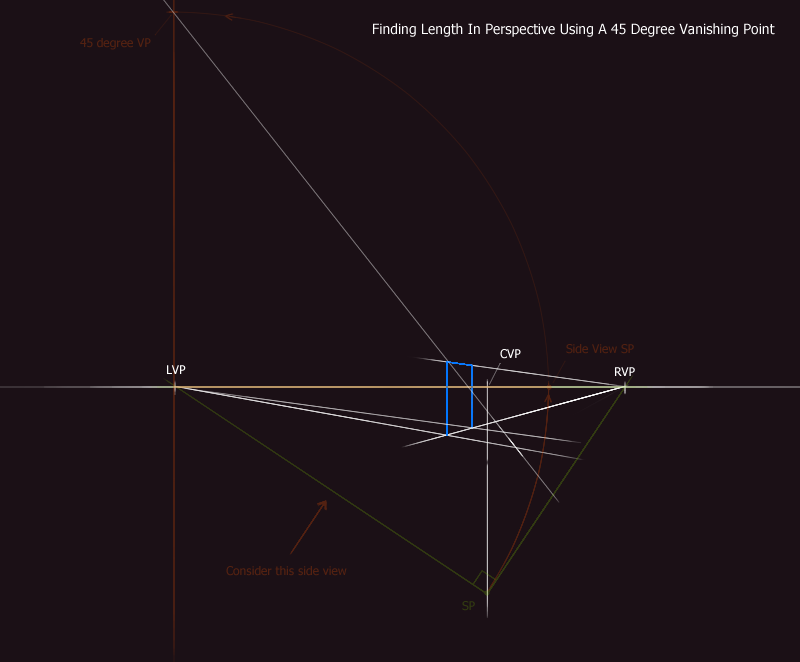
Step 5: Use the existing vanishing points to construct the rectangle we want.
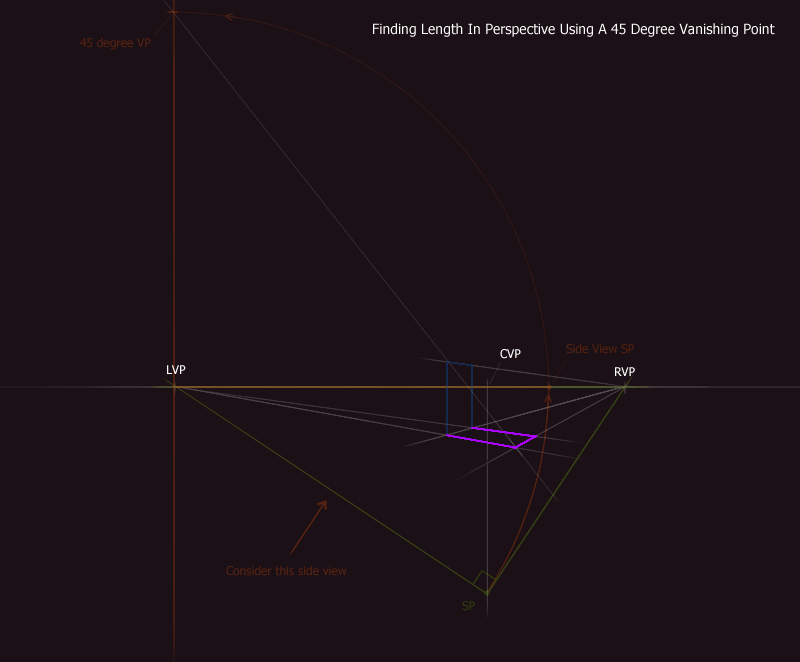
Hmmm ... upon reading this through, this process looks really confusing. In all honesty, I would advise using the Measuring Point method for this. I will try to do a study of the Measuring Point method at some point in the future and post it up.
- Starting with the blue rectangle in the diagram below, how do we rotate it in perspective to end up with the purple rectangle?

There are 2 methods that I am aware of for doing this, the "Measuring Point" method and (for want of a better name) the "45 Degree Vanishing Point" method.
I promised to investigate the 45 degree vanishing point method as described on p48 of How To Draw by Scott Robertson and Thomas Bertling where a 45 degree vanishing point is used to find a length in perspective.
Please note that I am still a learner myself so if you see any flaws in my logic, I would appreciate you pointing it out to me :).
Step 1: Go into top view and establish the Station Point using the Left Vanishing Point (LVP) and Right Vanishing Point (RVP). See p24 of How To Draw.

Step 2: Consider the side view that is perpendicular to the side of the rectangle.

Step 3: Project this side view over the top of the perspective view so that the Side View Picture Plane runs vertically through the LVP. Then find the 45 degree Vanishing point by arcing the Station Point through 90 degrees about the LVP.

Step 4: Go back into the perspective view. The 45 degree vanishing point we found in the side view will also work in perspective view since we kept the distance from the station points to the picture planes the same. In perspective view, use the 45 degree vanishing point to find the length of the rectangle when it is laid down horizontally.

Step 5: Use the existing vanishing points to construct the rectangle we want.

Hmmm ... upon reading this through, this process looks really confusing. In all honesty, I would advise using the Measuring Point method for this. I will try to do a study of the Measuring Point method at some point in the future and post it up.
“Today, give a stranger one of your smiles. It might be the only sunshine he sees all day.” -- H. Jackson Brown Jr.
CD Sketchbook
CD Sketchbook








